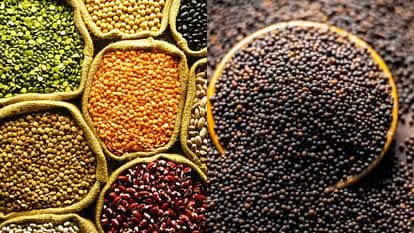Self-Reliance in Pulses Remains a Distant Goal
18-Oct-2025 01:28 PM

Self-Reliance in Pulses Remains a Distant Goal
The central government is consistently striving to make India self-reliant in the production of pulses, but some of its own policies have become obstacles to the success of this effort. Once again, a decision has been taken to take concrete steps in this direction, and a new mission has been launched to achieve self-reliance in pulses. For this mission, a budget allocation of ₹11,440 crore has been made. The government has set a target to increase the area under pulse cultivation from the current level of 275 lakh hectares to 310 lakh hectares—an increase of 35 lakh hectares—by the year 2030-31. Similarly, the goal is to raise the average yield of pulse crops to 1,130 kilograms per hectare and the total production to 350 lakh tonnes. Special focus will be given to increasing the area and production of pulses in 416 districts across the country.
It is worth noting that in the last four years, there has been a significant reduction of around 31 lakh hectares in the area under pulse cultivation. Understanding the reason behind this decline is not difficult—farmers are not receiving profitable prices for their produce, leading to a decline in their interest and enthusiasm for growing pulses. To address this, the government must first take concrete steps to boost farmers' morale and assure them that the purchase of their produce will be guaranteed at remunerative prices.
Although the government announces significant hikes in the Minimum Support Price (MSP) for both Kharif and Rabi pulse crops each year, and has also declared 100% procurement of crops like tur (pigeon pea), urad (black gram), and masoor (lentil), farmers still often face difficulties in selling their produce.
The massive import of pulses has become a serious concern. In the last financial year, imports reached an all-time high of 73.40 lakh tonnes. This led to such an oversupply in the domestic market that the prices of major pulses fell close to their MSP levels, depriving farmers of attractive incomes. As a result, the area under pulse cultivation during the Kharif season could barely increase.
Now the focus shifts to the Rabi season. The duty-free import of yellow peas, tur, and urad continues, while only a nominal 10% import duty is applied to lentils and chickpeas. There is an urgent need to revise this tariff policy.
